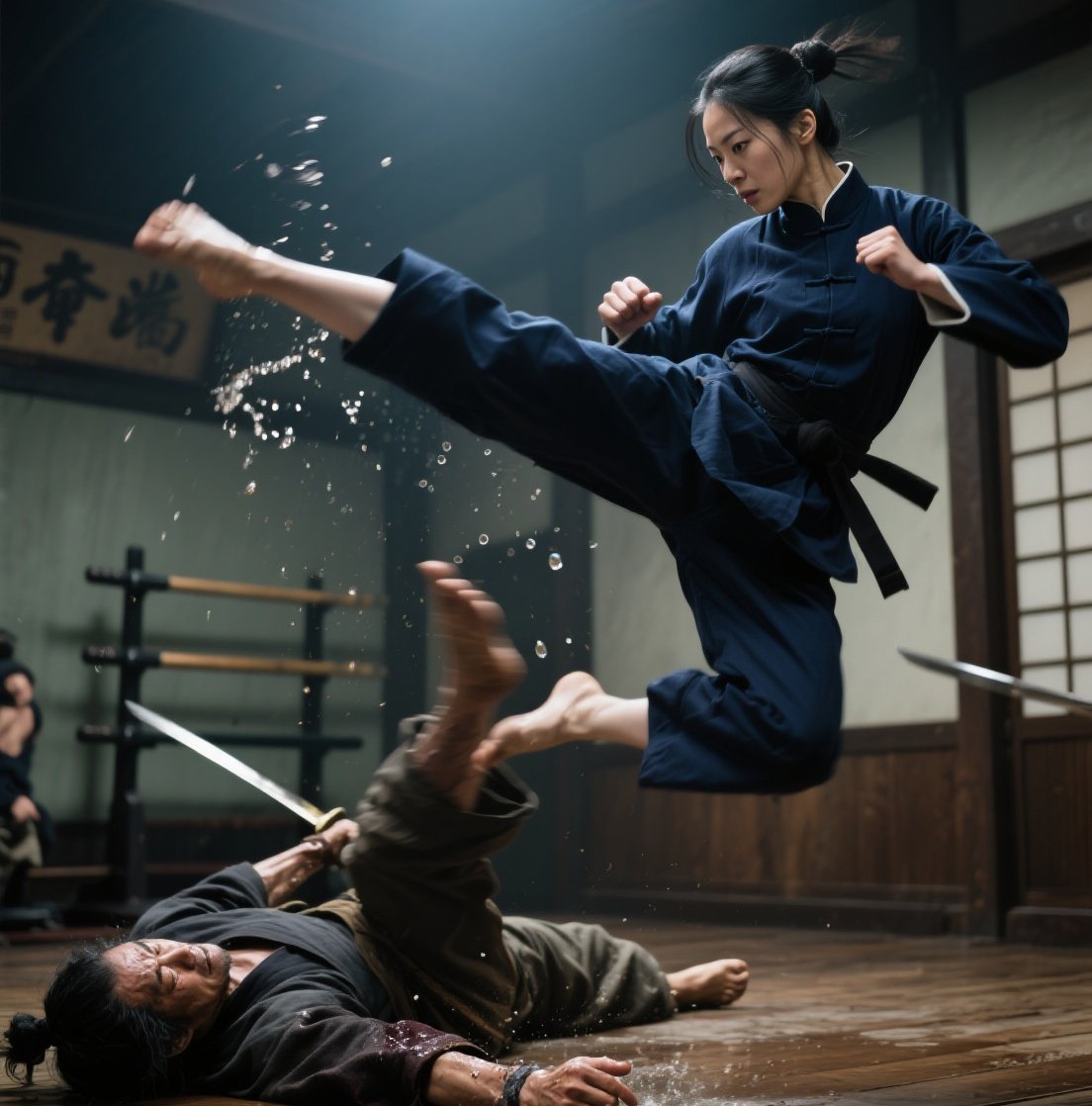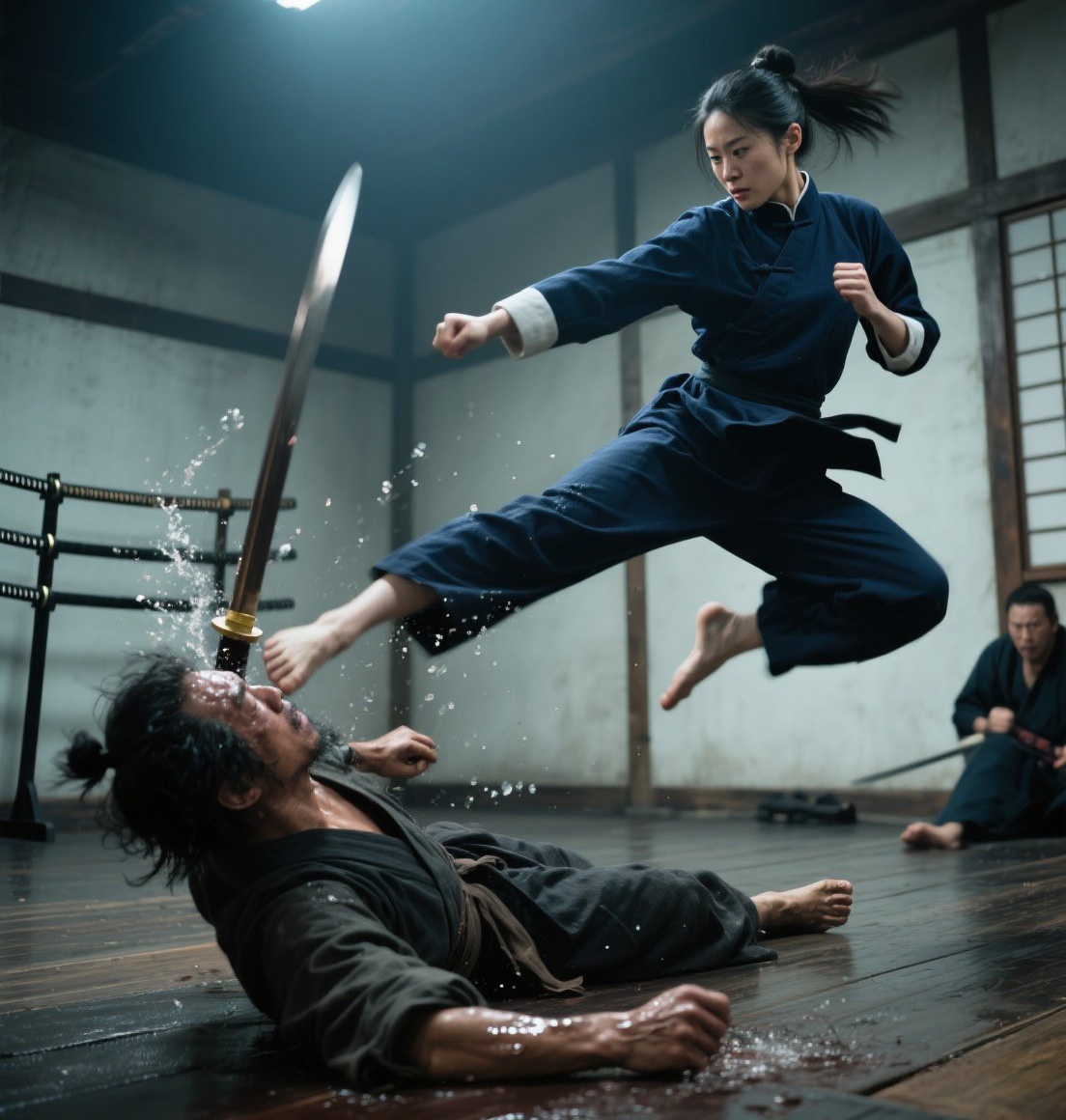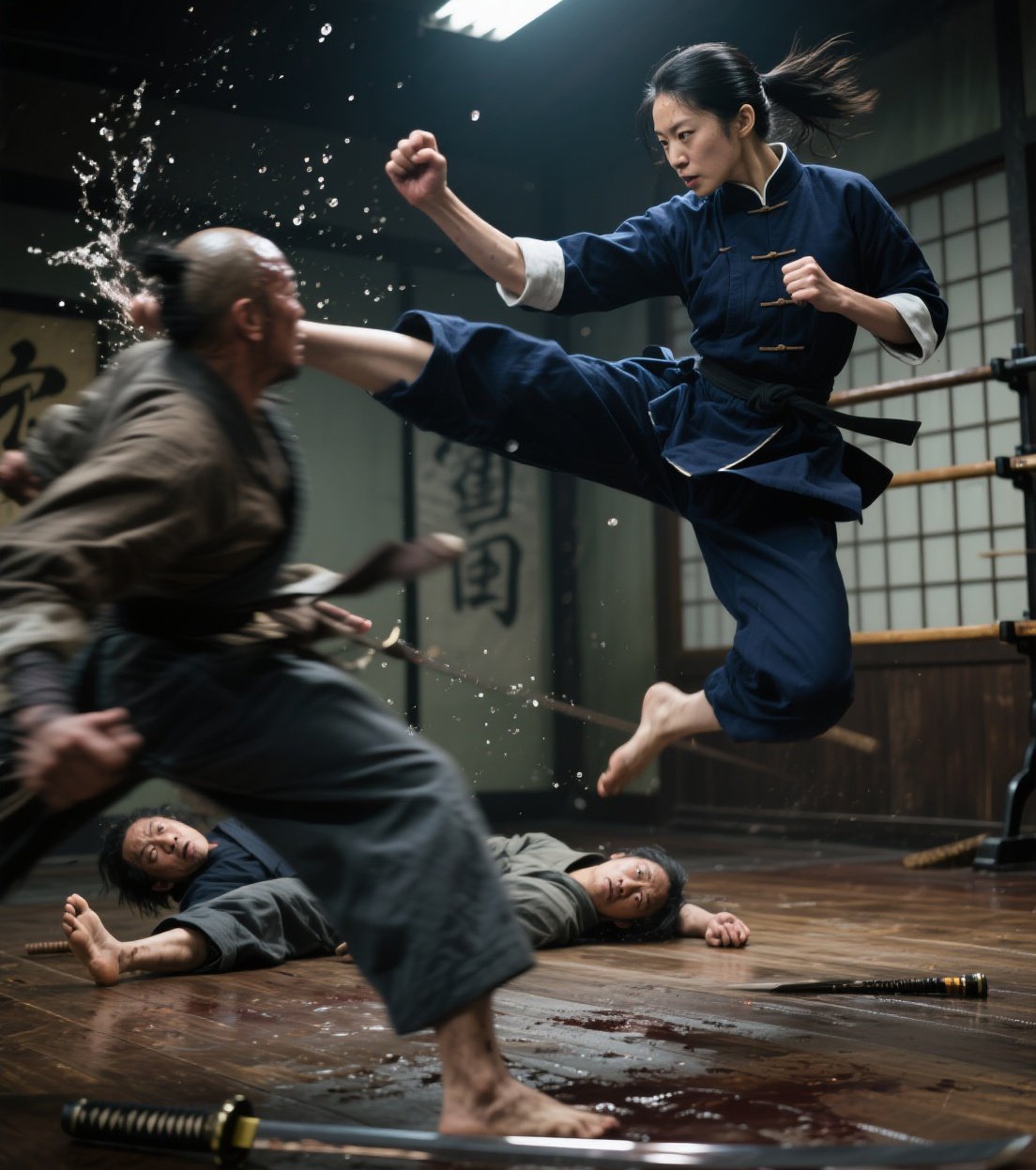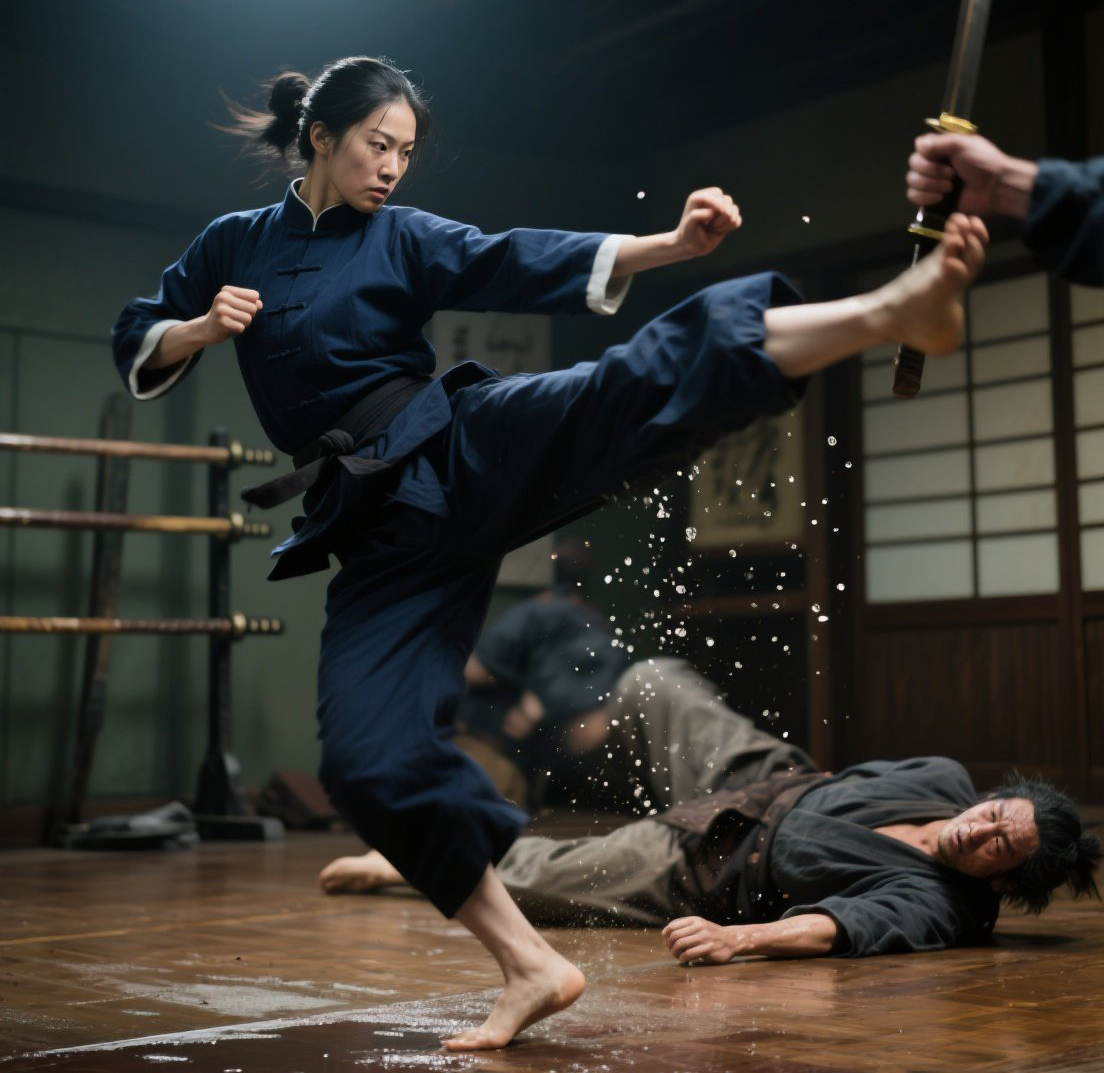Wing Chun: The Root of Efficiency
Origin & Philosophy: Developed in Southern China roughly 300 years ago (legend credits the nun Ng Mui), Wing Chun was designed for practical, close-quarters self-defense, enabling a smaller, weaker person to overcome a larger attacker. Its core tenets are efficiency, directness, and economy of motion.
Core Principles:
Centerline Theory: Dominate and attack the opponent's vertical centerline while protecting your own.
Simultaneous Attack & Defense (Lin Sil Die Dar): Blocking and striking occur in one fluid motion.
Sticky Hands (Chi Sao): The cornerstone training method, developing tactile sensitivity, reflexes, and control at trapping range.
Structure & Relaxation: Power comes from correct skeletal alignment and relaxed muscles, redirecting force rather than meeting it head-on.
Short-Range Dominance: Excels in infighting (elbow/knee range). Techniques include straight punches (Chain Punches), palm strikes, low kicks, and precise elbow/knee strikes.
Structure & Curriculum: Wing Chun has a defined syllabus with specific forms (Siu Nim Tao, Chum Kiu, Biu Jee, Mook Yan Jong - Wooden Dummy, Luk Dim Boon Kwun - Long Pole, Baat Jaam Do - Butterfly Swords). Training emphasizes mastering these forms and principles through repetitive drills, especially Chi Sao.
Mindset: Focuses on ingraining principles through structured practice. Adherence to the system's core concepts is paramount. It's a complete, self-contained art.

Jeet Kune Do: The Way of No Way
Origin & Philosophy: Created by Bruce Lee in the 1960s. Dissatisfied with the limitations and formality he perceived in traditional martial arts (including his Wing Chun base under Yip Man), Lee sought a more direct, efficient, and reality-based approach. JKD isn't a "style" in the traditional sense, but a concept, philosophy, and approach to combat and personal liberation.
Core Principles:
"Using No Way as Way; Having No Limitation as Limitation": Reject dogma. Absorb what is useful, discard what is useless, add what is specifically your own.
Simplicity & Directness: Eliminate the non-essential. Use the most efficient tools for the situation.
The Intercepting Fist (Jeet): The namesake principle – intercept the opponent's attack in motion, disrupting their balance and initiative, rather than blocking then countering.
Economy of Motion: Similar to Wing Chun, but applied without stylistic constraints.
Five Ways of Attack: A conceptual framework for offensive strategy (SDA, ABC, PIA, HIA, ABD).
Total Fitness & Realism: Emphasizes attributes like speed, power, endurance, coordination, and adaptability. Sparring with protective gear (aliveness) against resisting opponents is crucial.
Structure & Curriculum: JKD lacks rigid forms or a fixed syllabus. Training focuses on concepts, principles, and attribute development. It draws tools from anywhere effective: Wing Chun trapping, Western Boxing footwork/punches, Fencing footwork, Savate kicks, Wrestling/Judo grappling, etc. The "curriculum" is highly individualized and evolves.
Mindset: Critical thinking, experimentation, and personal expression are central. JKD is a liberating process, constantly evolving. It's not an end product but a journey of self-discovery.
Wing Chun vs. Jeet Kune Do: Key Differences Explained
| Feature | Wing Chun | Jeet Kune Do (JKD) |
|---|
| Nature | Defined Traditional Style | Martial Philosophy & Concept |
| Origin | Southern China (c. 18th Century) | Bruce Lee (1960s, USA) |
| Core Philosophy | Mastery of a specific, efficient system. | Liberation from style. Absorb what is useful; Express yourself. |
| Structure | Fixed syllabus, forms, progression. | No fixed syllabus or forms. Fluid, principle & attribute-based. |
| Training Focus | Ingraining system principles (Chi Sao, Forms). | Developing attributes (speed, power, timing, footwork) & pressure testing (alive sparring). |
| Range Specialty | Close Range (Trapping/Infighting) | All Ranges (Kicking, Punching, Trapping, Grappling). Emphasizes mobility. |
| Signature Tool | Chi Sao (Sticky Hands) | The Lead Hand (Jab/Stop Hit/Control) & Footwork (for interception & mobility). |
| Technique Source | Exclusively within Wing Chun system. | Anywhere effective: Boxing, Fencing, Wing Chun, Wrestling, Savate, etc. |
| Evolution | Preserves tradition. Changes are debated. | Inherently evolving. Demands constant personal refinement. |
| Goal of Practice | Master the Wing Chun system & principles. | Develop personal effectiveness & expressiveness in combat. |
| Mindset | Adherence & Refinement within the system. | Critical Analysis, Experimentation, Adaptation. |

The Bruce Lee Connection: From Seed to Evolution
Bruce Lee's journey is central. His foundation in Wing Chun under Yip Man provided him with core principles like centerline, economy of motion, and sensitivity (Chi Sao). These became foundational elements within JKD. However, Lee:
Rejected Formalism: Felt rote form practice and stylistic limitations hindered true combat effectiveness and personal growth.
Embraced Aliveness: Prioritized sparring against resisting opponents with protective gear (aliveness) over purely compliant drills.
Sought Range Integration: Found Wing Chun lacking in long-range kicking and grappling, actively incorporating tools from other arts.
Championed Individuality: Believed martial art must adapt to the individual, not vice-versa.
Which Path is Right For You? Tradition vs. Revolution

Conclusion: Roots and Wings
The "Wing Chun vs Jeet Kune Do" debate isn't about superiority, but about fundamentally different approaches to martial understanding. Wing Chun offers a time-tested, deeply refined system for close-quarters efficiency. Jeet Kune Do offers a revolutionary philosophy – a call to constant evolution, personalization, and reality-based training.
Wing Chun was the crucible; Jeet Kune Do was the liberation.
Bruce Lee used his Wing Chun foundation not to reject it utterly, but to transcend its limitations in pursuit of a broader, more fluid concept of combat effectiveness. One provides a powerful, specialized toolset; the other provides a methodology for building your own toolset. Whether you seek the deep roots of a traditional art or the liberating wings of a revolutionary concept, both paths offer profound insights into the art of combat and self-discovery. Understanding their relationship and distinct philosophies is key to choosing the path – or perhaps integrating elements of both – that best fuels your own martial journey. Explore the roots, then find your wings.
[Jeet Kune Do].Bruce.Lee.Fighting.Method.Volume.1.pdf
[Jeet Kune Do].[1978]Bruce.Lee's.1.and.3.Inch.Power.Punch.-.James.W.DeMile.pdf
[Jeet Kune Do].Bruce.Lee.Fighting.Method.Volume.4.pdf
[Jeet Kune Do].Bruce.Lee.Fighting.Method.Volume.3.pdf
[Jeet Kune Do].The_Art_Of_Expressing_The_Human_Body.pdf



